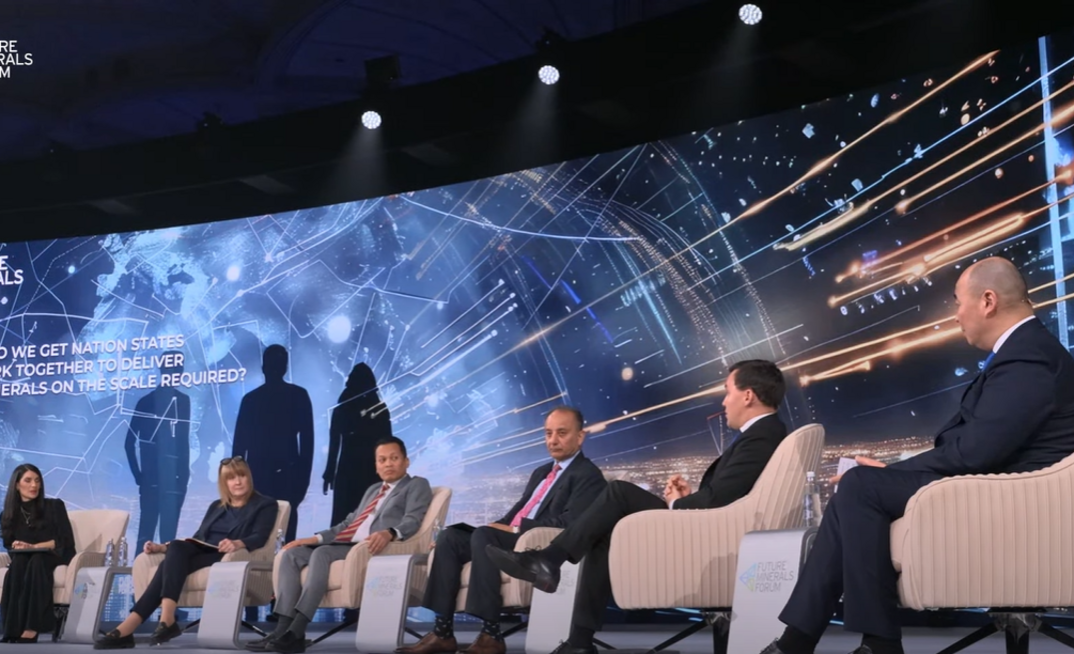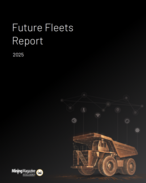The Future Minerals Forum (FMF) has taken on a more realistic tone than in previous years, according to regulars. While previous events were marked by opulence and unbridled optimism, this year's discussions are more grounded, they say.
Yet a sense of cautious positivity persists as Saudi Arabia attempts to position itself as a mediator between East and West, with its Vision 2030 looming large in its efforts to unite mineral-rich countries.
In a debate chaired today by CNN's Eleni Giokos, panellists discussed whether it is possible for nations to put geopolitics aside and collaborate in the face of the global transition, without leaving anyone behind.
The panel consisted of representatives from Finland, Pakistan, Kazakhstan, Malaysia and the UK. As expected, most answered yes. Global collaboration is key to achieving the minerals we need for the green transition.
YOU MIGHT ALSO LIKE
But it was Pakistan's Minister of Energy and Petroleum, Musadik Malik, who delivered a sobering counterpoint: international cooperation is easier said than done.
According to Malik, trade wars, polarised economic blocs, and economic disparities make global cooperation on critical minerals - in a way that generates equal value for all - difficult, if not impossible.
"We are very clearly beginning to see trade wars," Malik said. "Over the past three to four years, you can see how tariffs are being imposed and used across various blocs and regions. It's evident that trade wars have already begun."
According to Malik, the formation of polarised blocs is inevitable, especially as developing countries seek to retain more value from their minerals amid unequal distribution.
Trade wars
"In these trade wars, one of the factors already coming into play is the 'green barrier'," Malik said. "By green barrier, I mean measures such as carbon border taxes and new green policies. These policies will require developing countries—where most of the world's critical minerals and metals are sourced—to adopt green practices. However, when you examine the financing needed for this transition, you'll find that 75% of green financing is concentrated in the United States, China, and a handful of European countries."
"The strategic countries we've been talking about in this convention—they don't have any green finance. So therefore [...] they would naturally gravitate towards blocs, which will further polarise [the world]."
It's not hard to find examples. The Democratic Republic of Congo (DRC) produces 70% of the world's cobalt amidst a landscape of constant political turbulence, for instance, but almost none of this ore is processed within the country. According to data from the British Geological Survey, 90% of the DRC's cobalt is processed in China.
"There are countries that have assets. There are countries where the value is going to be created, and then there are countries where the value is going to be captured," Malik said. According to Malik, participating in bloc-like structures could allow countries currently high up the value chain to move downstream, further setting in stone global divides.
Pakistan collaborates with China on several industrial projects, including the infamous Belt and Road Initiative. However, Malik was quick to point out that when it comes to mining, North America has emerged as a more likely partner for the South Asian nation.
Other panellists highlighted their own nations' challenges in navigating this increasingly complicated global system. Malaysia's Minister of Natural Resources and Environmental Sustainability, Nik Nazmi Nik Ahmad, noted that while Malaysia is home to significant rare earth deposits, the country has yet to process its own minerals.
"Currently, none of the rare earths mined in Malaysia are processed here," he admitted. The country is uniquely positioned as it is the second-largest source of imported rare earth ore to China and home to the only ex-China rare earth producer. Despite this, none of the ore is processed within the peninsula.
Kazakhstan's Minister of Industry and Construction, Kanat Sharlapaev, touted his country's efforts to attract investment in mining and processing. "Kazakhstan has invested US$1 billion in private geological exploration over the past five years," he said, adding that the country's robust infrastructure and investor protections make it a emerging player in the global system.
But despite these efforts, Sharlapaev acknowledged the broader geopolitical challenges facing nations like Kazakhstan, which must navigate relationships with major powers like China, Russia, the EU, and the US.
If the goal is to achieve increase mineral productivity while facilitating a more equitable economic system, much remains to be done, according to Malik. Until the world develops equitable systems of cooperation, the promise of a unified mineral strategy may remain as elusive as the minerals themselves.
























